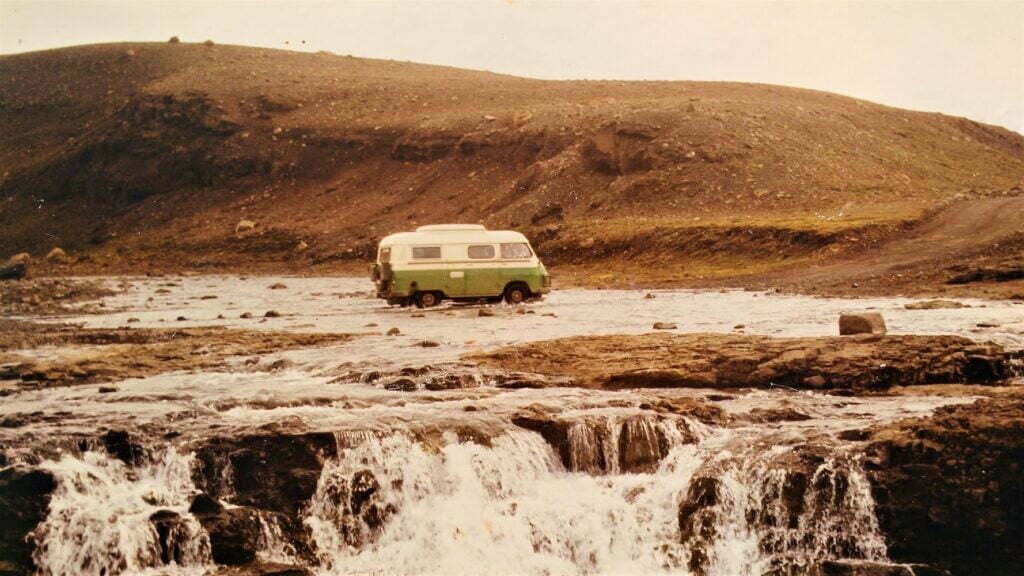
Tell us a bit more about yourself and how you ended up doing van life?
Traveling is my passion. Traveling has been taught to me from an early age. I have been camping abroad with my parents since I was 6 years old and by bike independently from the age of 15.
So I knew well enough that setting up a tent every day and taking it down again after a good week was actually a chore. This is especially true if things don’t go well. From my early teens I dreamed of crossing the Sahara in a 4×4.
I lived in Ostend and saw weekly military trucks passing towards the military camp in Lombardijde. These “4×4 covered wagons” reminded me of a tent on a truck and soon the first dreamy designs of a distant future with a permanently furnished tent on the back of a 4×4 came to light.
As a grown do-it-yourselfer and with some technical background as an industrial engineer, 10 years later I took the first real step into overlanding together with my wife and we bought a used 4×2 Mercedes 306D van with a limited budget that I fitted out myself. We traveled throughout Western Europe from the Pyrenees to the North Cape. That last destination made me want more and in 1982 I made a crankcase protection, mounted a second spare wheel + jerry can at the back and moved the air intake for the engine inside the cabin. Straight through Iceland became the first big adventure.
We conquered 70 cm deep river crossings. Until we drove a few kilometers in a riverbed and then had to climb out of the valley via a small steep slope.
The trail got so steep that the front-wheel drive spun.
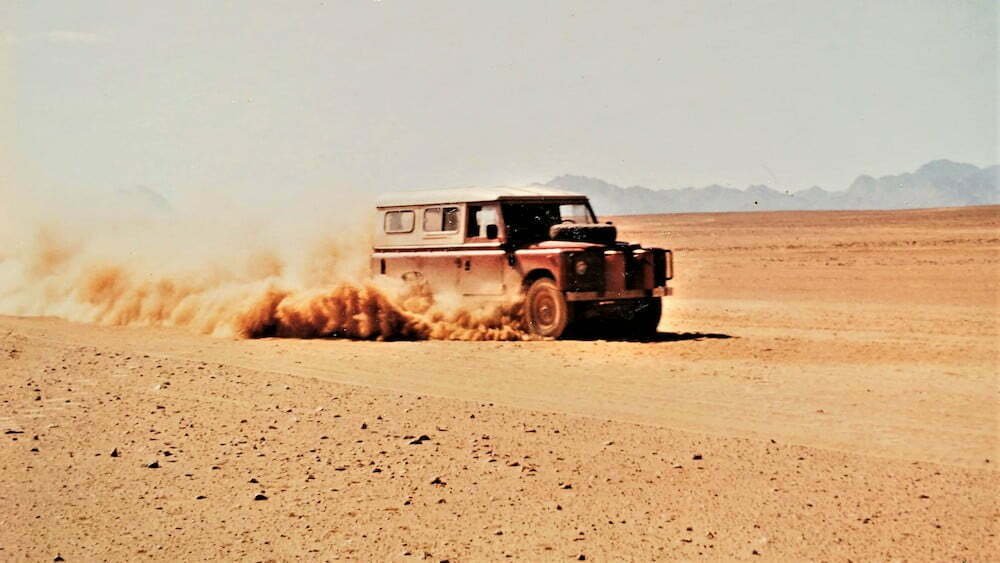
The drum brakes were soaked from the river water, so they temporarily stopped working.
Fortunately I was able to keep my cool and kept the accelerator at the same speed. The spinning tires started to smell, the car shifted a little from left to right on the spot. The loose gravel flew around. And then miraculously, our van started to climb up cm by cm and we were able to overcome the steep obstacle.
This made us realize that you should not be overconfident and only use a car on the terrain for which it was made. But the adventure beckoned on and we felt we were ready to cross the Sahara. I went through the specialist bookshops in Brussels to find French, English and German books that gave us a little more information. We bought our first LandRover. It became a series 3 V8. In 6 months I set it up as a mini camper van and equipped it with 5 extra petrol tanks and 2 spare wheels. In this pre-internet/GSM/GPS time we navigated using a paper map (with a scale of 1 to 4 million!) and a compass. We crossed Tunisia, Algeria, Mali and Niger in this way.
We lost our heart to the Sahara and returned in 1985. Shortly afterwards we wrote the first Flemish travel guide for the Sahara. Then our daughter turned 6 and we were tied to the school holidays.
Traveling to our beloved Sahara would no longer be an option.
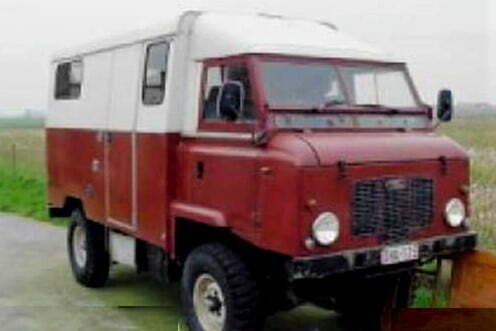
That is why we decided to invest all our experience in a big plan: to equip an old LandRover truck from 1969 (= Forward Control) with a BMW diesel engine and convert it into a camper so that it can be used for classic weekends and travel in Europe as well as later for overlanding and off-road. I estimated the conversion at 1 year, but in the end it became 3 years.
Meanwhile, in the Sahara, the first tourists were found dead with all their equipment stolen. Moments later it happened again a few times. These were the first signs of Al Qaeda. That scared me. So plans for our beloved Sahara were shelved and we limited our trips and vacations to the Ardennes and France.
The school-age daughter, work and other hobbies were given priority. In order to still be able to enjoy nature, we planned a move “to the outside” and during 5 years I restored a small farm in the Westhoek.
The Forward Control, which has meanwhile stopped, was then used as a weekend residence on the shipyard. After the move, we thoroughly enjoyed the fresh greenery surrounding us every day. But yes, soon the adventure travel bug reared its head again. But in addition to the good memories that remained, the disadvantages of each vehicle also lingered. We wanted to put more emphasis on:
In 2002 it eventually became a Discovery 2 TD5 with an inflatable Karsten igloo tent. Along with a tire compressor with a higher flow rate, the tent was up in a minimum of time.

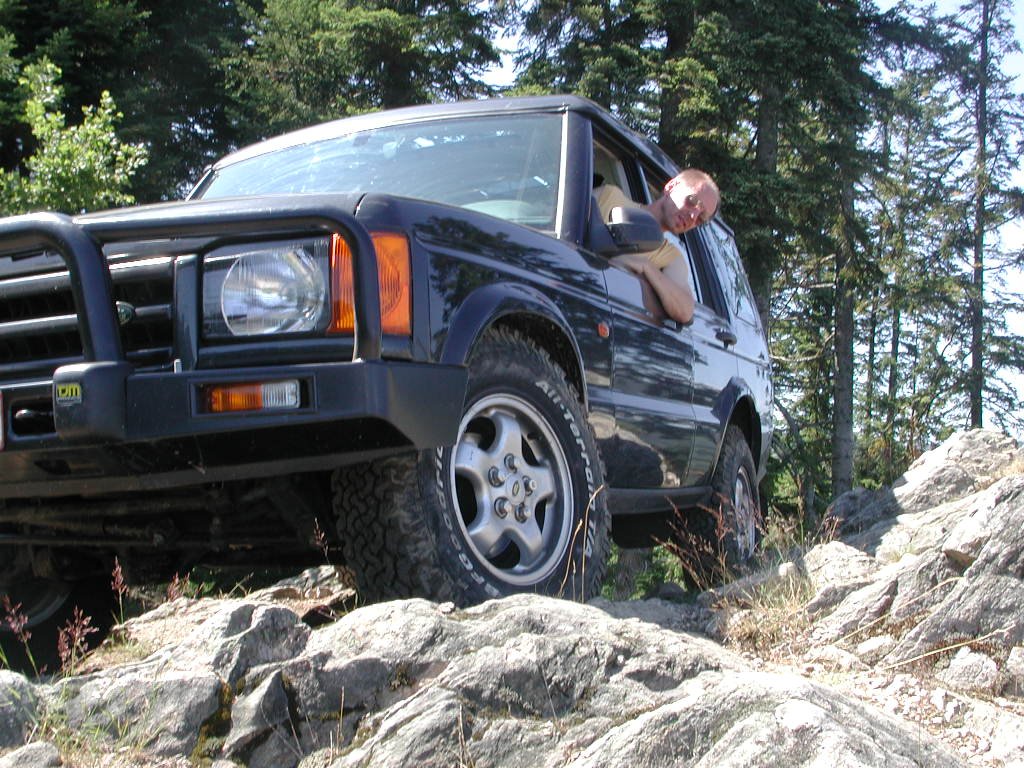
We completed our list via 4x4Plus with another off-road course by an off-road champion in Rochepaule.
Because of this we regularly had fun on off-road terrains and drove the trans-Pyrenees, the trans-France and some road books through the Alps along the French-Italian border.
In the meantime we had retired and had the overlanding bug again so in 2011 this car was replaced by a Discovery 4 with a Columbus roof tent from Autohome.
With this we did the Alps and the Pyrenees again and we passed successively through Morocco, West Africa and drove via Turkey, Iran, Turkmenistan, Uzbekistan, Kyrgyzstan, the Gobi desert and Mongolia to Beijing.

In the meantime we visited 55 countries and we don’t get tired of overlanding.
What overland vehicles do you use / have you built or do you dream of?
A total loss abruptly ended the story of our beloved Disco4. That is the time to evaluate and ask yourself: where do we still want to go, what do we really want, where do we attach importance and what do we want to avoid?
We had made a wish list from all our previous vehicles and experiences at the beginning of 2017:
After a search of 6 months, it turned out that the offer was limited, especially if you need a certificate of conformity to be able to register the vehicle in Belgium.
The Bremach T-rex was no longer being built at that time and a test drive with a used one made us decide that the cabin was too noisy. At that time, the Iveco Daily 4×4 (in short 3.5 tonne version) was no longer offered on the Iveco Belgium website. The Iglhaut Vito 4×4 was our choice, but at the last minute someone pointed out to us that they would not deliver a certificate of conformity. So the appointment was cancelled. The beloved VW Transporter did not have a full-fledged 4×4 with a reduction gearbox and only limited ground clearance.
A specialist who converts 4x4s for overlanding also had strong doubts about whether the self-supporting box was sufficiently sturdy for real off-road. The VW Crafter was no longer available in the old short model at that time and the new model would no longer be available in the shortened version.
So only the Sprinter remained. It could be converted in Germany by Oberaigner with the necessary papers, approval and warranty from Mercedes, with permanent 4×4, reduction transfer case with very small gears, 3 differential locks, without traction control and included the skid plate, sump and transfer case protection.
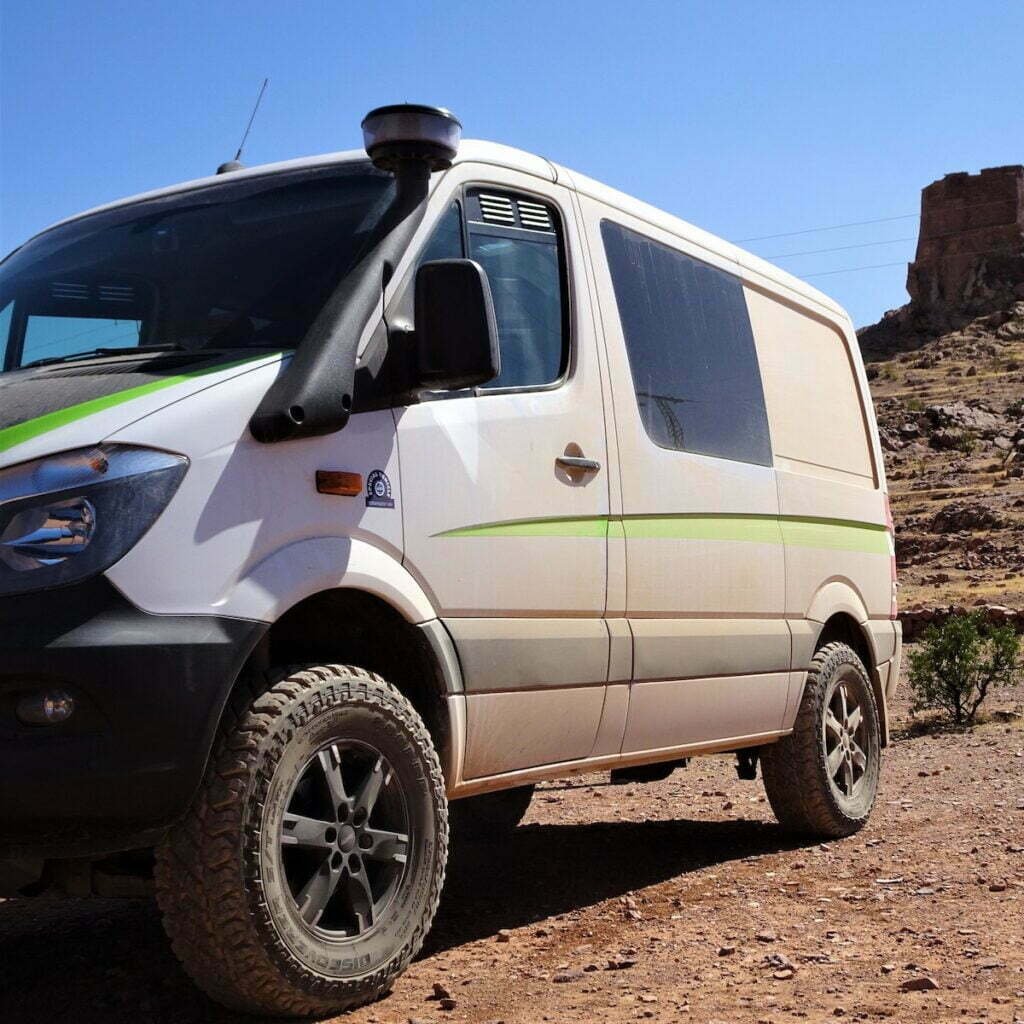
Our dream car had been found. With the desired limited length of a European pickup (5m25). The only thing it didn’t meet according to our wish list was the limited width. It is 2 m wide.
On the other hand, this provides the advantage that we can now sleep horizontally and thus create more free interior space. So far, it has been the right balance for us between off-road capabilities, limited exterior dimensions and just enough interior space and comfort in less pleasant weather conditions.
What’s been the best and worst thing of exploring in a built out van?
The worst things we’ve experienced in 45 years of overlanding are:
The best memories are:

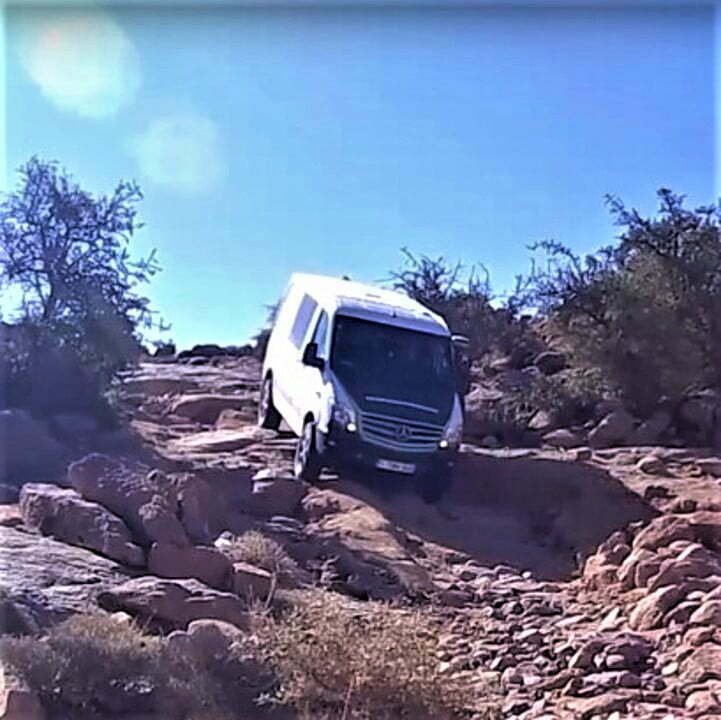
What has been your most memorable destination or experience traveling in Europe?
What’s still on your bucket list within Europe? What’s the overal plan?
Any tips / advice for people who want to hit the road to overland Europe?
The perfect means of transport for overlanding does not exist.
It is always a compromise between advantages on one level and disadvantages on another. Think carefully before choosing an overlander. Know what really matters to you. Leave everything you can spare at home. Overcharging is the most common mistake!
Everything should be in the same proportion (and don’t overdo it). It makes no sense to have a water supply for 2 weeks if you plan to go camping every day, or if you can only store food and drink for 3 days, or if your household battery can only last 2 days without recharging.
No vehicle that comes straight from the showroom or factory is ready for the real overland. So seek advice from someone with sufficient experience and knowledge of how best to prepare and adapt your vehicle. Your vehicle will always be too big at one point when you’re driving and too small at another time when you’re standing still. It will never be finished.
You gain new experience during every journey. And as you prepare for a new trek, you will want to make a small adjustment towards the expected conditions. Many think you can’t live without a hefty 4×4 with hulking jungle tires and a solid winch. You don’t really need a winch and the order of importance is as follows:
Yes, some are surprised but only in 4th place comes the 4×4.
After all, what is the benefit of even the best 4×4 system if:

Share this article:

EUxplore is an all in one adventure platform which connects travelers with the information and resources needed to explore Europe to the fullest. Our website and app operate as a social network, trip advisor, guide map as well as route planner.
– read more –
Follow Us:
Copyright 2022 · All rights reserved ThriveLab
